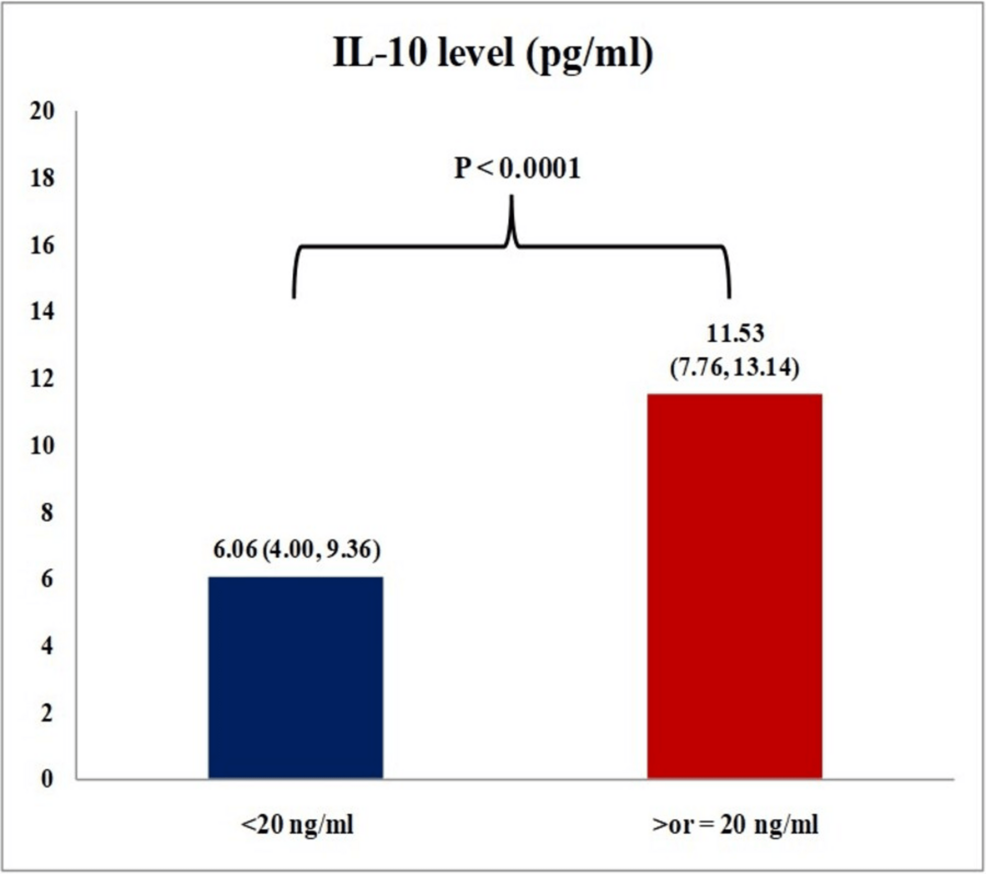Abstract
Introduction
The imbalance between pro- and anti-inflammatory mediators was suggested to be a contributory factor to the manifestations of allergic parthenium dermatitis. Inadequate circulating vitamin D and IL-10 levels can significantly influence the course of this allergic dermatitis.
Objective
The objective was to study the association between circulating IL-10 levels and vitamin D status in patients with parthenium dermatitis.
Materials and methods
Patients attending the dermatitis clinic were screened for eligibility, and 88 individuals were recruited.
A total of 101 unrelated healthy volunteers were included as controls. Circulating IL-10 cytokine and vitamin D levels were determined in both groups and compared.Results
 |
| Vitamin D status and IL-10 level in patients with parthenium dermatitis (N = 88) |
Conclusion
Lower circulating vitamin D and IL-10 levels, observed in patients with parthenium dermatitis, significantly impacted their quality of life. Assessing plasma IL-10 levels could be a potential biomarker for evaluating disease severity and treatment efficacy. Correcting vitamin D deficiency may improve IL-10 levels and enhance treatment outcomes.

No comments:
Post a Comment